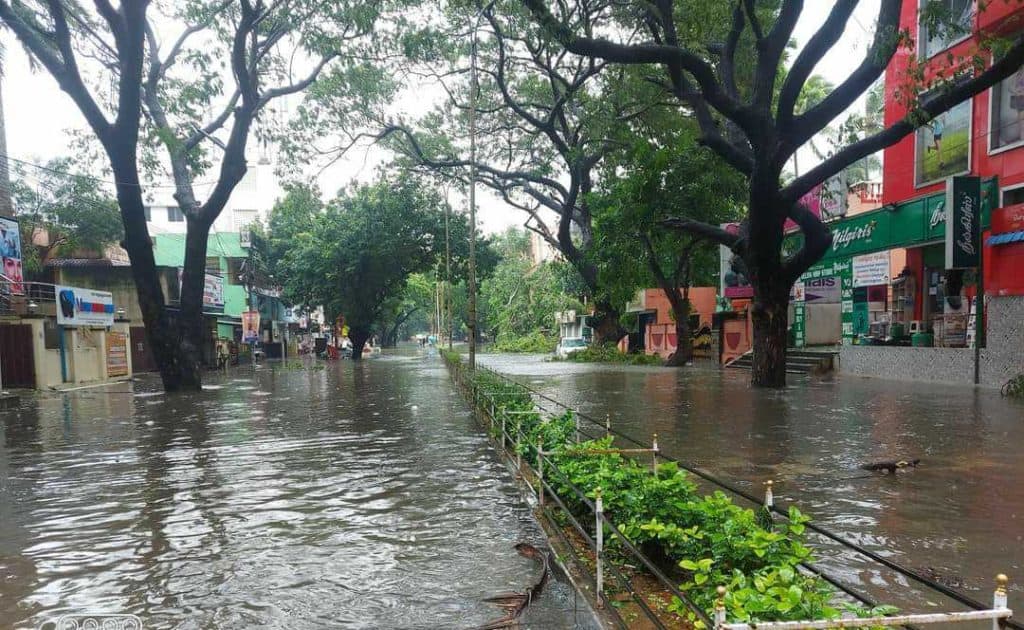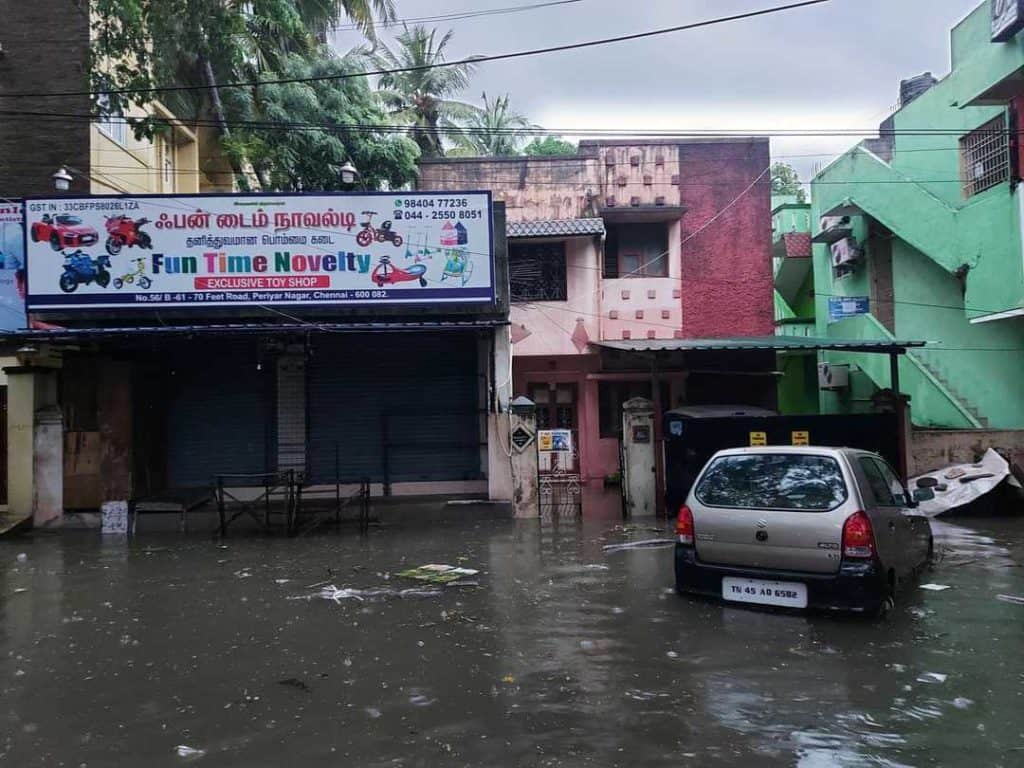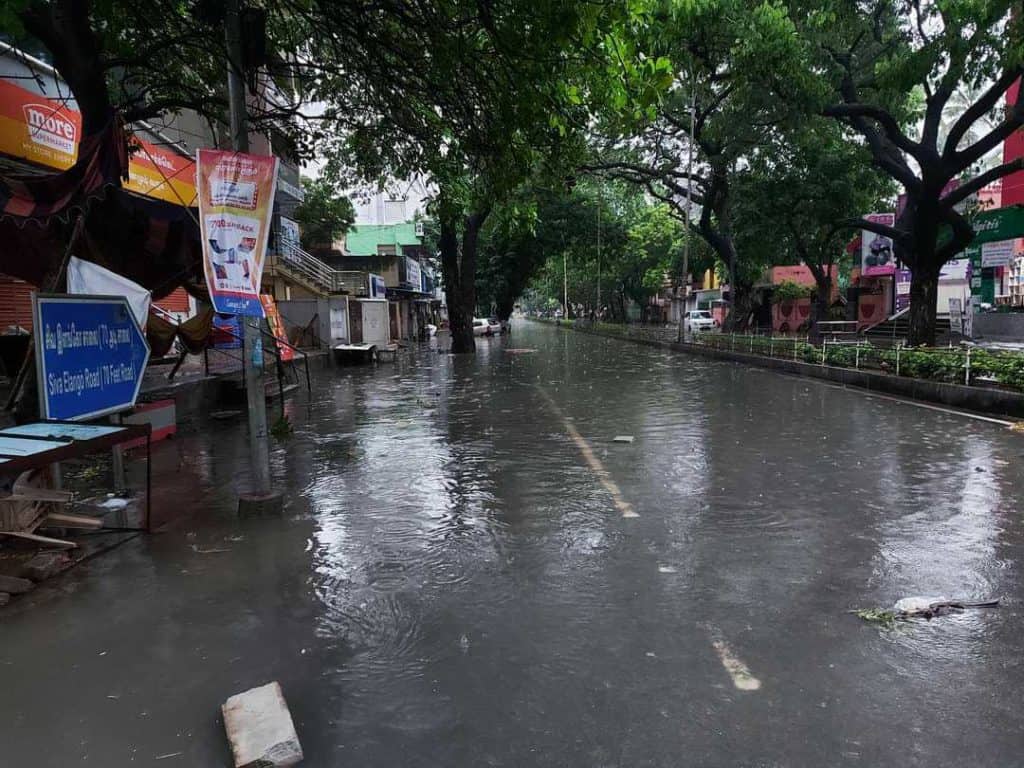The past month has been a whirlwind for most residents of Jawahar Nagar. Our streets made headlines and featured in news snippets, a scenario many of us didn’t imagine possible. It was due to the heavy downpour that the city experienced during the northeast monsoon. For many of us, this was reminiscent of the floods of 2015. The downpour left our streets waterlogged and residents had to scramble to reach higher ground and save their belongings.
Jawahar Nagar during the rains
On November 6th, we received an unprecedented amount of rainfall from 10 pm to 3.30 am. This led to extreme waterlogging. The next morning was a rude awakening for those on the ground floor as water had entered many homes. This prompted rescue and relief operations in the area. Food had to be distributed to the residents and many were even moved out of their homes by boats. Many were left without power for a couple of days.
The Chennai Corporation now got to work on removing the water from the roads. All stagnant water from the cross streets, circular road and main road was pumped out through motors on to 70 feet road. This road was chosen as it leads to a channel near Paper Mills Road without any deviation.
By this time, the state government had also swung into action, appointing Pradeep Kumar Masilamani IAS as the area-in-charge. He liaised with the residents to ensure that we were not in distress.
Just as we were gathering our bearings after the first spell of rains, a similar downpour occurred between November 10th and 11th. This further worsened the state of the locality. Once again, rescue efforts had to be made to ensure residents were not trapped in their homes as the water levels rose rapidly. Power was shut off to avoid any mishaps. Drone cameras were used by the rescue teams to understand the extent of impact.
Corporation and Metro Water teams decided to avert any future impact on rains by laying stormwater drain pipes that had been missing. But before this task could be completed we received another round of rains on November 26th.
This time, the flood waters mixed with sewage. The water was almost black in colour and stagnant. Even as the water from the previous spells were being drained, this led to further waterlogging. Many residents were marooned for days and unable to safeguard their belongings. The mixing of rain and sewage water was also a public health hazard, with many children and elderly being affected.
In effect, therefore, the entire locality was under water for almost all of November. The complete draining of water could only be done by December 1st.
Read more: Chennai floods: How these Mandaveli streets averted waterlogging even as it poured
What went wrong in Jawahar Nagar
As the city recovered from the rains, there were attempts to understand what went wrong that resulted in such extreme flooding. Residents complained of missing stormwater drains and water channels. There were questions raised on preparedness for such rainfall events. From my experience in living in Jawahar Nagar, one of the localised reasons for the extreme water-stagnation we experienced was the loss of most of Vannan Kuttai. It is a small water body that the water drained into in the past during instances of rain.
But Vannan Kuttai has suffered extreme neglect and a slow death in recent years. The water body was first subject to dumping of debris and sewage over the years. There was lack of maintenance and community ownership of this water body. Finally, as with many water bodies in the city, Vannan Kuttai was also encroached upon by the construction of flats.
Read more: How a pond becomes a sewage dump: The Vannan Kuttai tale
Close to 75% of the water body was lost to the construction there, with the rest falling prey to neglect. The impact of these actions was felt acutely during the recent rains. If Vannan Kuttai had been protected and maintained, much of the water could have drained into the water body, averting the extreme water-logging faced by the area.
Another reason for the events of November is the uneven nature of roads in the area. Water drained from roads at a higher altitude on to the side streets that had lower altitude and remained so. Some streets that sloped to the side saw water stagnation on the periphery. Without proper milling, some roads had increased in height while the homes remained at a lower level, leading to water rushing into homes.
Missing and incomplete stormwater drain network is another issues faced by the area. This has been a common theme across the city. In order to avoid future flooding, a proper audit of all the stormwater drains in the area is necessary. Without this step, we can expect similar levels of water on the streets during future spells of rain. Proper stormwater drains and better rainwater harvesting systems are the need of the hour.
Read more: All that’s wrong with stormwater drains in Chennai and how to fix them
Residents faced an absolutely nightmarish scenario for a whole month due to the rains, despite the best efforts of authorities in-charge. Even as land prices in the area skyrocket, such basic civic amenities have been found to be wanting. Some of the key lessons from the rains must be implemented on war footing to avoid such hardships in the future.


